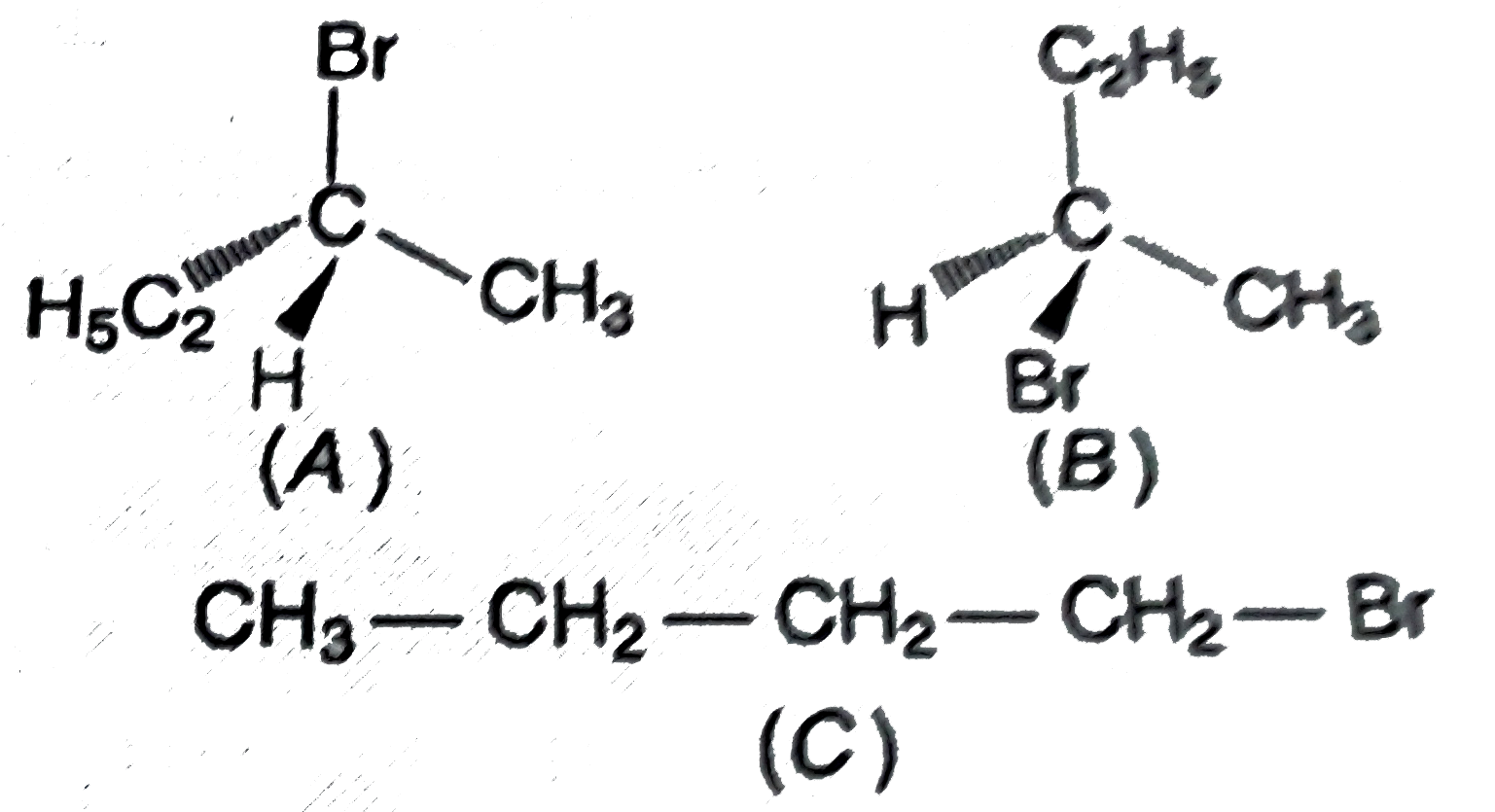The addition of is the easiest with
The correct Answer is:D
To determine which alkene undergoes the addition of HBr most easily, we need to consider the stability of the carbocation that forms during the reaction. The addition of HBr to alkenes proceeds through the formation of a carbocation intermediate, and the stability of this carbocation is a key factor in the reaction's rate.
1. Identify the Alkenes: List the alkenes you are considering for the reaction with HBr. For example, let's say we have propene (CH3-CH=CH2), butene (CH3-CH=CH-CH3), and cyclohexene (C6H10).
2. Understand Carbocation Formation: When HBr adds to an alkene, the double bond breaks, and a proton (H+) adds to one of the carbon atoms, leading to the formation of a carbocation on the other carbon. The more stable the carbocation, the easier the addition of HBr will be.
3. Evaluate Carbocation Stability:
- Primary Carbocation: Least stable (e.g., CH3-CH2-CH2^+)
- Secondary Carbocation: More stable (e.g., CH3-CH^+-CH3)
- Tertiary Carbocation: Most stable (e.g., (CH3)3C^+)
4. Analyze Each Alkene:
- Propene: Forms a secondary carbocation upon addition of HBr.
- Butene: Can form either a primary or a secondary carbocation, depending on the position of the double bond.
- Cyclohexene: Forms a secondary carbocation upon addition of HBr.
5. Determine the Easiest Addition: The alkene that forms the most stable carbocation will allow for the easiest addition of HBr. In this case, if we compare the stability of the carbocations formed:
- Propene and cyclohexene both form secondary carbocations.
- Butene can form a primary carbocation, which is less stable.
6. Conclusion: The addition of HBr is easiest with alkenes that can form a more stable carbocation. Therefore, between propene, butene, and cyclohexene, the addition of HBr is easiest with propene or cyclohexene due to the formation of secondary carbocations.
Final Answer:
The addition of HBr is easiest with alkenes that can form secondary or tertiary carbocations, such as propene or cyclohexene.
- Primary Carbocation: Least stable (e.g., CH3-CH2-CH2^+)
- Secondary Carbocation: More stable (e.g., CH3-CH^+-CH3)
- Tertiary Carbocation: Most stable (e.g., (CH3)3C^+)
- Propene: Forms a secondary carbocation upon addition of HBr.
- Butene: Can form either a primary or a secondary carbocation, depending on the position of the double bond.
- Cyclohexene: Forms a secondary carbocation upon addition of HBr.
- Propene and cyclohexene both form secondary carbocations.
- Butene can form a primary carbocation, which is less stable.
The addition of HBr is easiest with alkenes that can form secondary or tertiary carbocations, such as propene or cyclohexene.
Topper's Solved these Questions
Similar Questions
Knowledge Check
- Question 1 - Select One
The addition of HBr is the easiest with
ACH2=CHClBClCH=CHClCCH3−CH=CH2D(CH3)2C=CH2. - Question 2 - Select One
The additon of HBr to 2-pentene gives
A2-bromopentane onlyB3-bromopentane onlyC2-bromopentane and 3-bromopentaneD1-bromopentane and 3-bromopentane - Question 3 - Select One
Reaction of HI si easiest with
ACH3OHBCH3CH2OHC(CH3)2CHOHD(CH3)3COH
Addition of HBr to propene
View SolutionThe addition of HBr to but-1-ene in the presence of dibenzoyl peroxide yields
View SolutionThe addition of HBr of 1-butene gives a mixture of products A,B and C

(C) CH3−CH2−CH2−CH2−Br
The mixture consists ofView SolutionAnti-Markownikoff's addition of HBr is not observed in
View Solutionthe addition of HBr to an alkene in the presence of a peroxide is
View Solution

